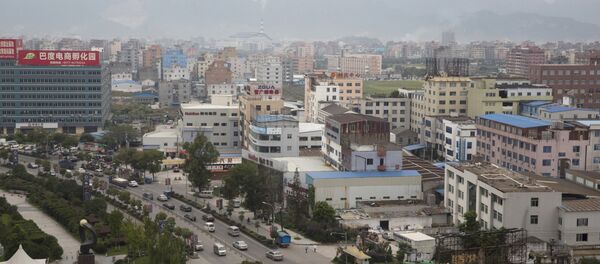Kristian Rouz — US industrial output unexpectedly declined last month despite the overall economic acceleration, supported by the rising energy prices and robust gains in inflation. A key Federal Reserve manufacturing production measure reflected the disruption in car production in Michigan, following a major fire at one of America's largest auto parts facilities.
According to a new report from the Federal Reserve, US factory output dropped 0.1 percent in May. This comes after an upgraded assessment for April, when industrial output increased 0.9 percent.
READ MORE: French Car Lobby Group Cancels Trip to Iran Amid US Sanctions Threat
The Fed's measure is a composite index of industrial output, combining the data for several sectors, including manufacturing, mining and drilling, electricity generation, and utilities. Last month's decline was driven by a 0.7-percent slump in manufacturing, its greatest decline since 2014. Production of automobiles and car parts decreased a massive 6.5 percent.
The Fed said the incident at the Meridian Magnesium car parts factory in Eaton Rapids, Mich. on May 2 was the main contributor to the decline in car production across the US. Local authorities said a fire was followed by an explosion after the fire suppression system sprayed water into molten metal.
The incident halted the production of car parts used by many automobile producers in the US, halting the assembly of the Ford F-150, among other car models.
"Disruptions associated with the fire should be temporary, and auto production schedules point to an increase in related output in June, undoing at least a good portion of the May decline," Daniel Silver of JPMorgan Chase said.
Excluding cars and parts, US industrial output rose 0.3 percent in May.
READ MORE: 'Many in the US Feel Deep Angst About China's Economy' — Professor
Manufacturing makes up some 75 percent of total US industrial production, meaning the massive expansion in mining and oil drilling could hardly make up for the disruption in car output.
US mining expanded 1.8 percent in May, while oil and natural gas extraction specifically increased 3.9 percent, driven by the rising global oil prices, which in turn was supported by the summer driving season in the US and solid demand for energy overseas.
Utility output increased 1.1 percent compared to a 3.2-percent gain the previous month. This comes amid a higher demand for electricity from residential and business customers due to the summer weather and an elevated use of HVAC systems.
A separate report from the Institute for Supply Management (ISM) said its index of US manufacturing rose to 58.7 last month compared to 57.3 in April — with readings above 50 indicating expansion. This points to a projected increase in US factory output in the coming months.
The Federal Reserve said total industrial output in May rose 1.7 percent year-on-year, driven by a significant increase in the mining sector that skyrocketed 12.6 percent. Utilities grew an annual 4 percent.
Additionally, the measure of US industrial capacity utilization declined 0.2 percent to 77.9 percent last month. This means many manufacturers are deliberately idling their equipment, expecting an improvement in market demand for their goods.
The US Federal Reserve is tracking industrial capacity utilization as part of its inflation assessment, including factory gate inflation. Meanwhile, US inflation increased to 2.8 percent in May, inspiring the central bank's latest decision to raise borrowing costs to 2 percent.





